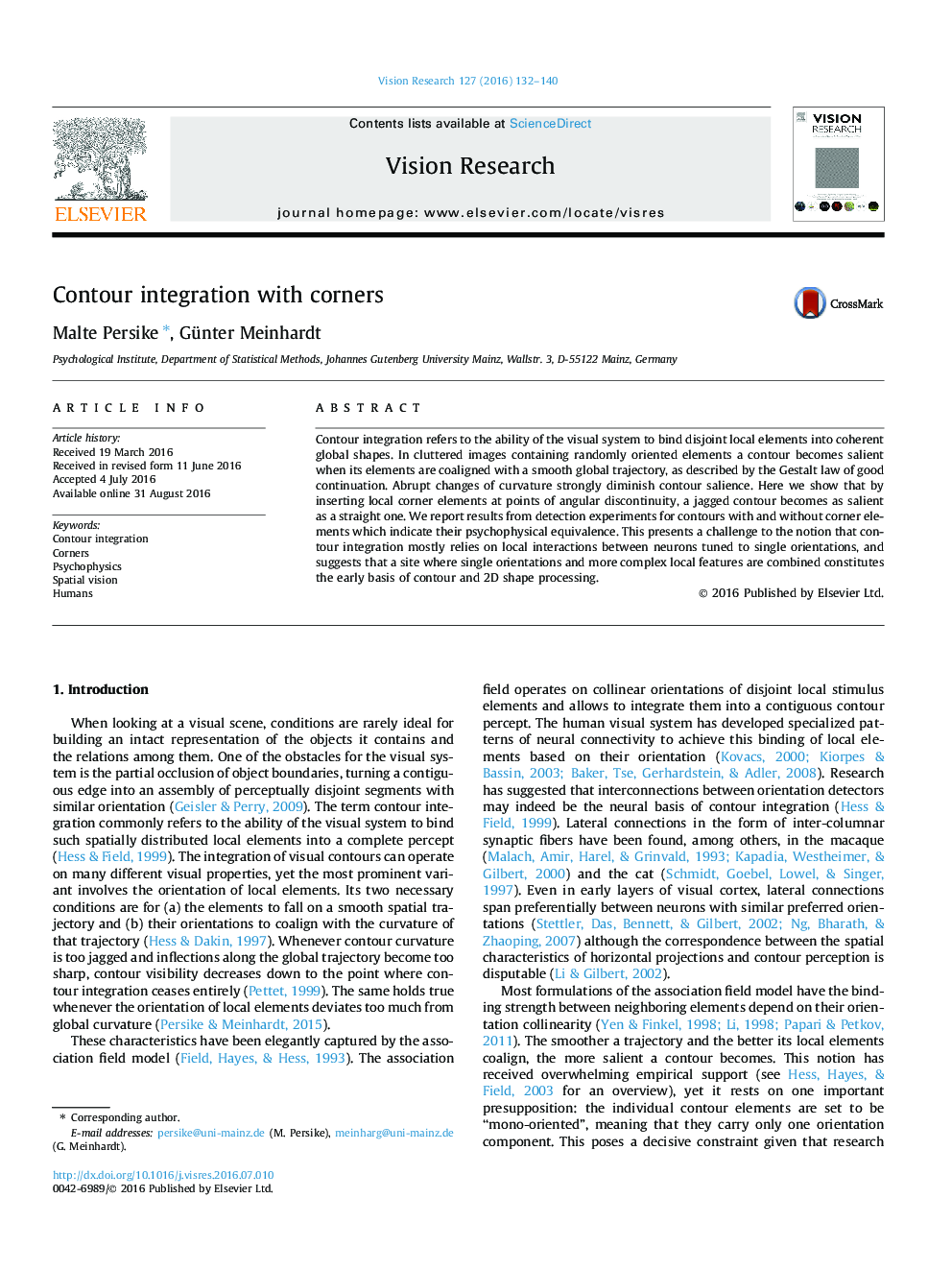| Article ID | Journal | Published Year | Pages | File Type |
|---|---|---|---|---|
| 6202884 | Vision Research | 2016 | 9 Pages |
â¢Contour integration with straight elements ceases with increasing angular disparity.â¢Corner elements render contours perfectly visible for all angular disparities.â¢Contours with and without corners exhibit similar psychophysical characteristics.â¢Contour completion needs to incorporate the neural representation of corners.â¢At least part of the contour integration process involves higher cortical areas.
Contour integration refers to the ability of the visual system to bind disjoint local elements into coherent global shapes. In cluttered images containing randomly oriented elements a contour becomes salient when its elements are coaligned with a smooth global trajectory, as described by the Gestalt law of good continuation. Abrupt changes of curvature strongly diminish contour salience. Here we show that by inserting local corner elements at points of angular discontinuity, a jagged contour becomes as salient as a straight one. We report results from detection experiments for contours with and without corner elements which indicate their psychophysical equivalence. This presents a challenge to the notion that contour integration mostly relies on local interactions between neurons tuned to single orientations, and suggests that a site where single orientations and more complex local features are combined constitutes the early basis of contour and 2D shape processing.
